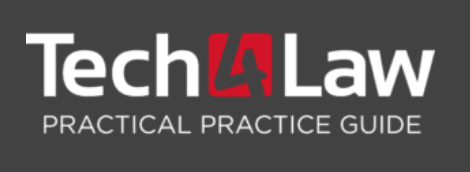
Article first published on tech4law.co.za on 31 May 2021, written by Paula Sartini
Document creation and management have a big impact on the day-to-day life of a knowledge worker and subsequently on a company. Generating documents is a time-staking process with the average employee spending approximately 50% of their time creating and preparing documents [1]. Despite this time investment, approximately 83% of employees recreate documents that they cannot find on the company network [2]. All of this time spent creating and recreating brand documents is estimated to cost a company $20 000 or over R300 000 per annum.
Yet, many companies do not have content governance systems in place to manage brand templates, documents, presentations or content which results in duplication of work, employee inefficiencies, inconsistent branding and increased workloads particularly for the IT and branding departments. The value of having the correct brand assets easily available when they are needed, extends beyond improving employee inefficiencies, it also improves customer and employee experiences, driving customer and employee retention and positively impacts the company’s bottom line.
Whether employees are developing documents, presentations or emails, content should be easily accessible and companies need to gain control of this process to overcome employee inefficiency, drive down costs, improve brand consistency and enhance customer experiences.
Saved time means money saved
According to Tech Crunchies, document issues account for over 21% of daily productivity loss [3]. The average salary in South Africa is R22 500 per month which means that companies spend on average, R4 725 per employee per month on document issues. That amounts to R56 700 per employee, per annum in lost productivity.
Having correctly branded and up-to-date templates, document, presentations and email content easily accessible to employees as and when they need them, helps to improve employee efficiencies as it saves time spent searching for documents that have been misfiled or accidentally deleted. This also prevents the need for employees to spend time reproducing branded content that already exists and gives them peace of mind that they are sending the correct and most recent and brand compliant documents and templates to customers.
On-brand document compliance across the business
Brand consistency is a key driver of business success. When you take your brand seriously, customers believe you pay attention to every detail and this reinforces your values and builds brand trust. As part of this, templates are an important component of business communication and need to carry the correct content, logo and brand elements including the font used.
Within organisations, many employees can access, edit and save company templates and documents, resulting in brand inconsistencies across documents. In some instances, outdated templates are used carrying incorrect company details from the director’s details to contact numbers which raises questions about the legitimacy of the document. Further, brand inconsistencies across documents dilute the brand, influence brand perceptions and impact customer trust in the organisation.
To overcome this, companies should be able to share the latest documents and templates across the organisation with immediate, permission-based access. However, employees should be restricted from being able to override content on these legal and binding documents which can result in incorrect information being sent to customers. This is supported by findings from Kroll Ontrack, which attribute 26% of data loss incidents to human error. [4]
Improved security
By implementing user permission access to branded assets such as letterheads, templates and documents based on specific departments or individuals, adds a layer of security to this content. It also allows for companies to monitor who accesses the documents and the changes they make to them.
While managing document accessibility within the organisation is important, it is equally important to safeguard access to company assets and templates by third-parties. In some instances, companies save all their brand assets and templates on an extranet for employees and partners to easily access, but it is just as easy for third parties to access. Companies should save these documents within secure, access-controlled environments, such as a cloud-based platform, to allow for content to be updated, shared and managed while protecting against third-party access which could have dire consequences for the brand including potential fraudulent activities and reputational damage.
Better customer experience
Empowering employees to access the information they need at the right time, enables them to work effectively and improves employee satisfaction levels. This has a direct impact on customer experiences as inspired employees put in more effort. With the brand compliant content easily available when it is needed, employees can focus on meeting customer expectations with improved response times and on-brand content every time.
The real value of brand-compliant templates and brand governance lies in the ability to remove the content clutter from the workplace, empowering employees to meet customer expectations and deliver customer experiences that drive satisfaction levels and retention. It also reduces the need for IT and branding departments to fix mistakes after the incorrect content has been sent out and aids companies to meet governance and compliance requirements. In addition, with a secure, cloud-based solution, the company can minimise potential reputational damage to its brand by preventing third-party access to branded templates and content.
About BrandQuantum
BrandQuantum develops software solutions to help companies deliver compliant customer communications and documents. The tamperproof email signatures that are sent out with every single email via Microsoft Outlook have built-in verification tools to give customers added peace of mind that your company emails are authentic. The BrandOffice solution offers permission control to company documents so that only those employees that need access to your documents have it. In addition, access to company documentation and templates is tracked and audited to give companies line of site of document usage and overall documentation compliance.
[1] https://www.gonitro.com/blog/2015/05/7-facts-will-make-rethink-document-management/
[2] https://go.m-files.com/Global-IIM-Benchmark-Report-EN-US.html
[3] https://hubbion.com/crunchies/document-management-statistics/
[4] https://consoltech.com/blog/10-common-causes-of-data-loss/
